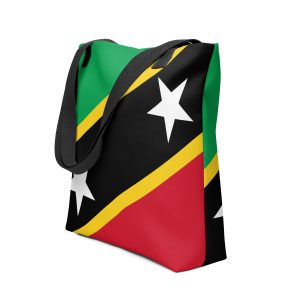Emancipation of Slaves (1834) and the Apprenticeship System
The emancipation of enslaved people in St. Kitts and Nevis in 1834 was a significant event, but it did not immediately bring full freedom. Instead, the British government introduced an “apprenticeship system” designed to manage the transition from slavery. Under this system, the formerly enslaved were required to continue working without pay for their former owners under harsh conditions, causing unrest and dissatisfaction.
The Emancipation Act of 1834
On August 1, 1834, slavery was formally abolished across the British Empire, including St. Kitts and Nevis. However, instead of granting full freedom, the apprenticeship system was established. The system divided former slaves into two categories:
- Predial apprentices: Agricultural workers who had to serve for four more years.
- Non-predial apprentices: Domestic workers who had to serve for two additional years .
The apprentices worked 40 to 45 hours per week without pay, and in exchange, they were supposed to receive basic provisions. However, this system heavily favored the planters, who retained control over the labor force, often extending work hours and continuing to punish workers .
Unrest and Resistance
The apprenticeship system was deeply unpopular among the newly freed population, who saw it as a continuation of slavery. Almost immediately, unrest broke out on the islands. Many apprentices refused to work, protesting their lack of true freedom. On St. Kitts, strikes erupted, with hundreds of apprentices walking off plantations in protest. Those who resisted were often punished with whippings or imprisonment .
In addition to strikes, some former slaves sought ways to buy their full freedom early, though the costs were often prohibitive. Others used legal challenges to resist the system, while some engaged in quiet acts of defiance, such as slowing down their work .
The Role of Abolitionists
Local resistance was supported by the abolitionist movement in Britain. Figures like Joseph Sturge condemned the apprenticeship system as a form of slavery under a different name. Their efforts played a crucial role in raising public awareness in Britain, where growing pressure eventually forced the British government to dismantle the system .
As the abuses of the apprenticeship system became widely known, particularly in St. Kitts and across the British Caribbean, public outrage increased. Abolitionists published personal stories and reports of the conditions apprentices endured, further fueling the anti-apprenticeship movement .
Full Emancipation in 1838
Originally, the apprenticeship system was meant to last until 1840 for predial laborers and 1838 for non-predial workers. However, resistance on the islands, along with abolitionist pressure in Britain, led to the system being abandoned in 1838. That year, all apprentices in St. Kitts and other British West Indies colonies were granted full freedom .
While emancipation was a major victory, the challenges for the newly freed population were far from over. Many faced difficulties in securing fair wages, and the sugar planters, who still controlled much of the land, worked to keep wages low and maintain dominance.
Impact on Agriculture and Labor
The sugar industry on St. Kitts faced a serious labor shortage after full emancipation, as many former apprentices refused to continue working under poor conditions. In response, planters began recruiting indentured laborers, particularly from India, to replace the lost labor. This shift marked the start of a new chapter in the Caribbean’s labor history .
Despite these challenges, the end of the apprenticeship system allowed some freed people to acquire small plots of land and begin farming independently. This contributed to a gradual diversification of the island’s economy, though the dominance of sugar production continued for some time .
Final Thoughts
The emancipation of slaves in 1834, followed by the contentious apprenticeship system, marked a complex period in the history of St. Kitts and Nevis. While the British government presented the apprenticeship as a stepping stone to freedom, it was largely seen as an extension of slavery. Through local resistance and international abolitionist pressure, the system ended earlier than planned, granting full freedom in 1838. However, for many freed people, the struggle for true independence and economic security was just beginning.
Historical Overview of St. Kitts and Nevis
Colonial History
Significant Historical Events
Pre-Columbian Era
European Exploration and Colonization
- 1493 – Christopher Columbus’s Second Voyage
- 1623 – Establishment of the First European Settlement
- 1626 – Kalinago Massacre
Colonial Era
- 1650s – Expansion of Sugar Plantations
- 1666 – French Occupation of St. Kitts
- 1706 – Nevis Raid
- 1783 – Treaty of Paris
20th Century Developments
- 1932 – Founding of the St. Kitts Workers’ League
- 1952 – Universal Adult Suffrage
- 1967 – Associated Statehood
- 1978 – Death of Sir Robert Llewellyn Bradshaw
Independence and Modern Developments
- 1983 – Independence
- 1998 – Nevis Secession Referendum
- 2005 – Hurricane Impact
- 2015 – Team Unity Government
Disclaimer
The information provided on stkittsnevisflag.com is for general informational purposes only. While we strive to provide accurate and up-to-date information, we make no warranties or representations of any kind, express or implied, about the completeness, accuracy, reliability, suitability, or availability of the information contained on this website. Any reliance you place on such information is therefore strictly at your own risk.
stkittsnevisflag.com will not be liable for any loss or damage, including without limitation, indirect or consequential loss or damage, or any loss or damage whatsoever arising from loss of data or profits arising out of, or in connection with, the use of this website.
We encourage all users to verify any information found on this site before relying on it. If you find any incorrect or outdated information, please contact us at info@stkittsflag.com so we can make the necessary corrections.




